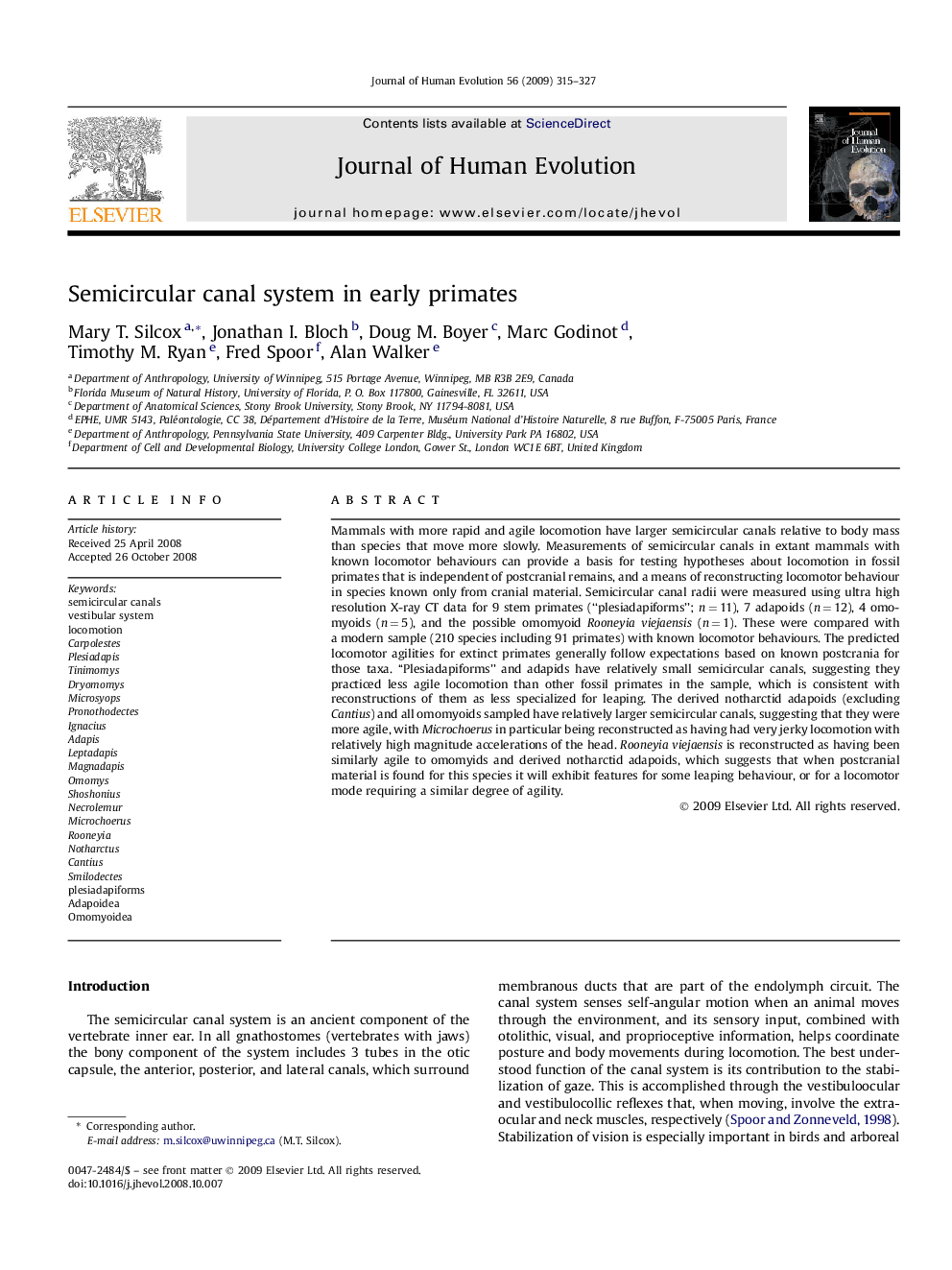| کد مقاله | کد نشریه | سال انتشار | مقاله انگلیسی | نسخه تمام متن |
|---|---|---|---|---|
| 4556713 | 1329498 | 2009 | 13 صفحه PDF | دانلود رایگان |

Mammals with more rapid and agile locomotion have larger semicircular canals relative to body mass than species that move more slowly. Measurements of semicircular canals in extant mammals with known locomotor behaviours can provide a basis for testing hypotheses about locomotion in fossil primates that is independent of postcranial remains, and a means of reconstructing locomotor behaviour in species known only from cranial material. Semicircular canal radii were measured using ultra high resolution X-ray CT data for 9 stem primates (“plesiadapiforms”; n = 11), 7 adapoids (n = 12), 4 omomyoids (n = 5), and the possible omomyoid Rooneyia viejaensis (n = 1). These were compared with a modern sample (210 species including 91 primates) with known locomotor behaviours. The predicted locomotor agilities for extinct primates generally follow expectations based on known postcrania for those taxa. “Plesiadapiforms” and adapids have relatively small semicircular canals, suggesting they practiced less agile locomotion than other fossil primates in the sample, which is consistent with reconstructions of them as less specialized for leaping. The derived notharctid adapoids (excluding Cantius) and all omomyoids sampled have relatively larger semicircular canals, suggesting that they were more agile, with Microchoerus in particular being reconstructed as having had very jerky locomotion with relatively high magnitude accelerations of the head. Rooneyia viejaensis is reconstructed as having been similarly agile to omomyids and derived notharctid adapoids, which suggests that when postcranial material is found for this species it will exhibit features for some leaping behaviour, or for a locomotor mode requiring a similar degree of agility.
Journal: Journal of Human Evolution - Volume 56, Issue 3, March 2009, Pages 315–327